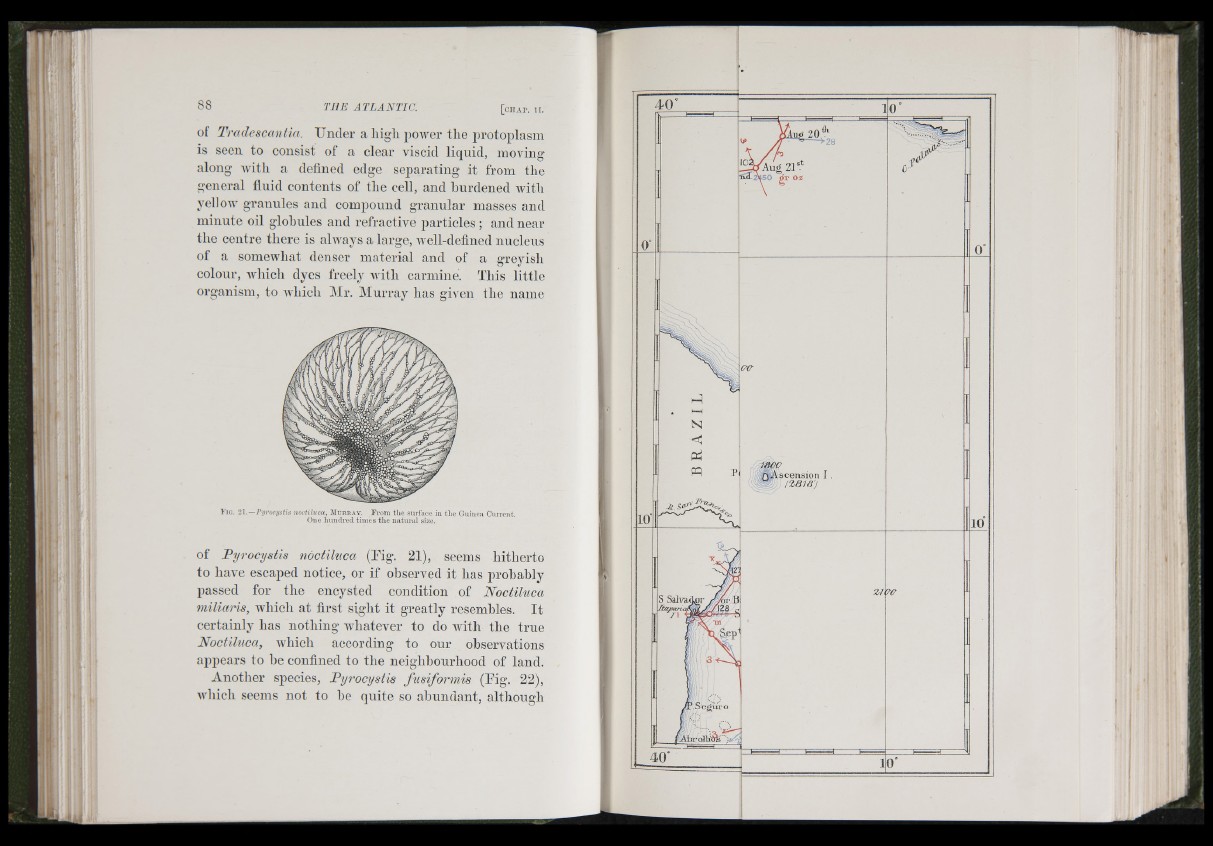
of Tt'adescantia. Under a high power the protoplasm
is seen to consist of a clear viscid liquid, moAung
along Avitli a defined edge separating it from the
general fluid contents of the cell, and hurdened Avitli
yelioAv granules and compound granular masses and
minute oil globules and refractive p a rtic le s; and near
the centre there is ahvays a large, Avell-defined nucleus
of a somewhat denser material and of a greyish
colour, AAdiich dyes freely Avith carmine. This little
organism, to AAdiich IMr. Murray has given the name
F i g . 2 \.—Pyrocystis mctiluca, M u r r a y . From th e surface in th e Guinea Current.
One hundred times the n a tu ra l size.
of Pyrocystis noctiluca (Fig. 21), seems hitherto
to liaA’e escaped notice, or if observed it has probably
passed for the encysted condition of Noctiluca
niiliaris, Avhicli at first sight it greatly resembles. It
certainly has nothing Avhatever to do Avith the true
Noctiluca, Avhich according to our observations
appears to he confined to the neighbourhood of land.
Another species, Pyrocystis fusifmonis (Fig. 22),
Avliich seems not to he quite so ahundant, although